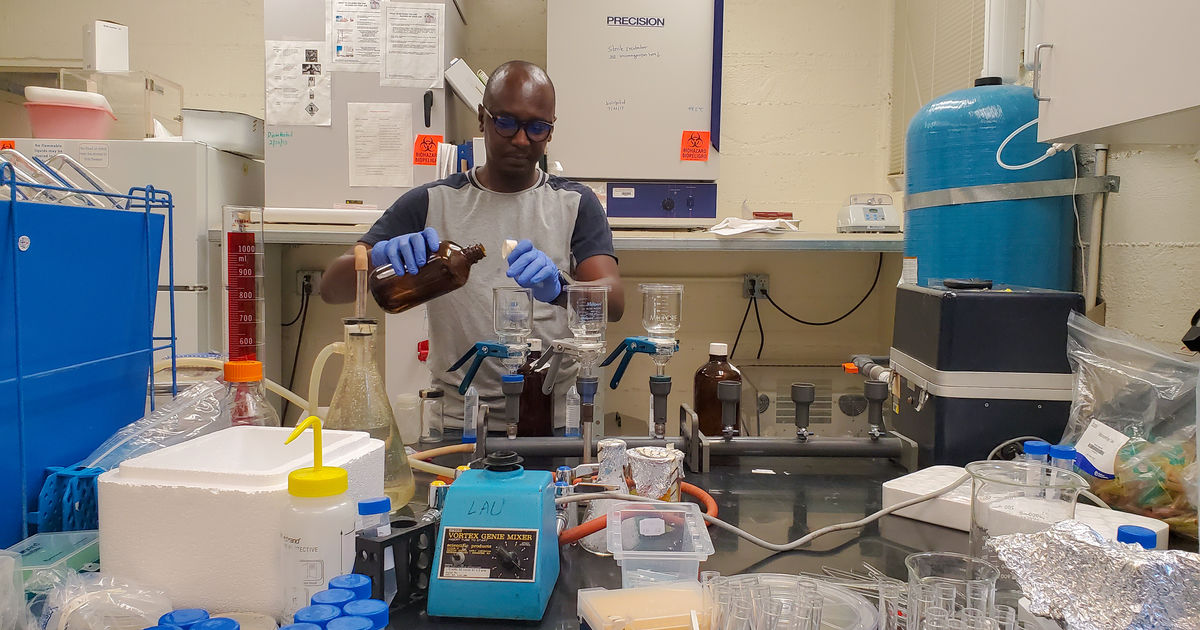Researchers find contaminated water in fast-food soda fountains | News
Researchers find contaminated water in fast-food soda fountains ... Loma Linda University


Loma Linda University Researchers Find Microbial Contamination in Drinking Water Sources

Loma Linda University (LLU) researchers have conducted a study on the water quality of common sources of drinking water in the Eastern Coachella Valley, including soda fountains at fast-food restaurants. Their findings revealed that 41% of the water samples collected from these soda fountains contained total coliforms, which serve as an indicator of water contamination.
Microbial Contamination in Drinking Water
The research team performed molecular analysis on the water samples and discovered traces of genetic material from bacteria such as Salmonella spp (Salmonella), Pseudomonas aeruginosa, and Escherichia coli (E. coli). Based on these findings, the study authors recommend that soda fountain owners regularly clean and flush their dispensers to prevent water contamination.
Study Details
The study, titled “Microbial contamination analysis of drinking water from bulk dispensers and fast-food restaurants in the Eastern Coachella Valley, California,” was published in Water Supply, a peer-reviewed journal of the International Water Association. The researchers collected a total of 72 water samples from fast-food soda fountains, water vending machines, and tap water from outdoor sources in the Eastern Coachella Valley. They conducted on-site measurements of physico-chemical parameters and brought the samples back to the laboratory for conventional cultivable methods and molecular analysis.
Presence of Biofilms and Public Health Concerns
The analysis of the water samples indicated the presence of biofilms, which are organized communities of organisms commonly found in nature and can cause significant problems in environmental, industrial, and medical settings. In several cases, the amount of bacteria in soda fountain samples exceeded the maximum permissible levels set by the Environmental Protection Agency. The authors of the study emphasized that the presence of pathogenic microorganisms in drinking water is a serious public health concern.
Causes of Water Contamination
Based on their results, the authors suggest that biofilms form over time in water distribution systems, particularly in plastic piping that transports water to fast-food soda fountains and water vending machines. Additionally, they found that the filtration systems of soda fountains, when not properly maintained, fail to effectively prevent water contamination.
Sustainable Development Goals (SDGs)
The Eastern Coachella Valley is an environmental justice area that includes the city of Coachella and the unincorporated communities of Thermal, Oasis, Mecca, and North Shore. These communities primarily consist of Latino populations, including migrant and agricultural-worker families who face challenges in accessing safe drinking water. This study aligns with several Sustainable Development Goals (SDGs), including:
- SDG 3: Good Health and Well-being
- SDG 6: Clean Water and Sanitation
- SDG 10: Reduced Inequalities
Recommendations and Future Research
Dr. Ryan Sinclair, the study’s last author and an associate professor at Loma Linda University School of Public Health and School of Medicine, emphasizes the importance of developing surveillance and regulations specifically targeting fast-food soda fountains and water dispensers. The study authors recommend that owners regularly clean and flush their dispensers and use antimicrobial tubes to control the growth of biofilms. The researchers plan to conduct a risk assessment to determine whether the identified levels of microbes in the water samples pose a health hazard or are associated with any health conditions.
Funding and Contact Information
The study was funded by Loma Linda University School of Medicine. For more information about research at LLU, visit researchaffairs.llu.edu or call 909-558-8544.
SDGs, Targets, and Indicators
1. Which SDGs are addressed or connected to the issues highlighted in the article?
- SDG 6: Clean Water and Sanitation
- SDG 3: Good Health and Well-being
- SDG 10: Reduced Inequalities
2. What specific targets under those SDGs can be identified based on the article’s content?
- SDG 6.1: By 2030, achieve universal and equitable access to safe and affordable drinking water for all.
- SDG 6.3: By 2030, improve water quality by reducing pollution, eliminating dumping and minimizing release of hazardous chemicals and materials, halving the proportion of untreated wastewater, and substantially increasing recycling and safe reuse globally.
- SDG 3.9: By 2030, substantially reduce the number of deaths and illnesses from hazardous chemicals and air, water, and soil pollution and contamination.
- SDG 10.2: By 2030, empower and promote the social, economic, and political inclusion of all, irrespective of age, sex, disability, race, ethnicity, origin, religion or economic or other status.
3. Are there any indicators mentioned or implied in the article that can be used to measure progress towards the identified targets?
- Presence of total coliforms in water samples as an indicator of water contamination.
- Presence of genetic material from bacteria such as Salmonella spp (Salmonella), Pseudomonas aeruginosa, and Escherichia coli (E. coli) in water samples.
- Exceeding maximum permissible levels of bacteria in soda fountain samples set by the Environmental Protection Agency.
- Presence of biofilms in water distribution systems.
Table: SDGs, Targets, and Indicators
| SDGs | Targets | Indicators |
|---|---|---|
| SDG 6: Clean Water and Sanitation | 6.1: By 2030, achieve universal and equitable access to safe and affordable drinking water for all. | – Presence of total coliforms in water samples as an indicator of water contamination. – Exceeding maximum permissible levels of bacteria in soda fountain samples set by the Environmental Protection Agency. |
| SDG 6: Clean Water and Sanitation | 6.3: By 2030, improve water quality by reducing pollution, eliminating dumping and minimizing release of hazardous chemicals and materials, halving the proportion of untreated wastewater, and substantially increasing recycling and safe reuse globally. | – Presence of genetic material from bacteria such as Salmonella spp (Salmonella), Pseudomonas aeruginosa, and Escherichia coli (E. coli) in water samples. – Presence of biofilms in water distribution systems. |
| SDG 3: Good Health and Well-being | 3.9: By 2030, substantially reduce the number of deaths and illnesses from hazardous chemicals and air, water, and soil pollution and contamination. | – Presence of genetic material from bacteria such as Salmonella spp (Salmonella), Pseudomonas aeruginosa, and Escherichia coli (E. coli) in water samples. |
| SDG 10: Reduced Inequalities | 10.2: By 2030, empower and promote the social, economic, and political inclusion of all, irrespective of age, sex, disability, race, ethnicity, origin, religion or economic or other status. | – East Coachella Valley being an environmental justice area with communities primarily consisting of Latino migrant and agricultural-worker families struggling for access to safe drinking water. |
Note: The table provides a summary of the identified SDGs, targets, and indicators based on the analysis of the article.
Behold! This splendid article springs forth from the wellspring of knowledge, shaped by a wondrous proprietary AI technology that delved into a vast ocean of data, illuminating the path towards the Sustainable Development Goals. Remember that all rights are reserved by SDG Investors LLC, empowering us to champion progress together.
Source: news.llu.edu

Join us, as fellow seekers of change, on a transformative journey at https://sdgtalks.ai/welcome, where you can become a member and actively contribute to shaping a brighter future.







